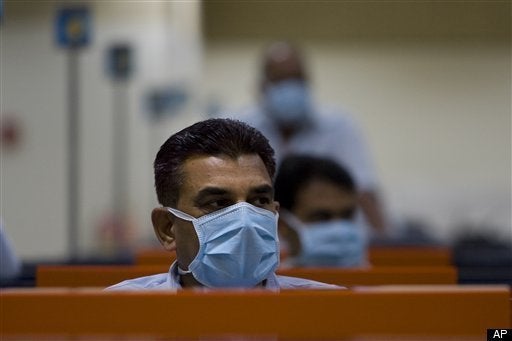
WHO has just declared a flu pandemic -- the first since 1968. So we might ask, "what is different?" Moving from the prior phase 5 to the Pandemic 6 level currently implies only sustained spread in different continents.
But such a move is confusing, since each year the seasonal flu has similar characteristics and kills 500,000 people globally, yet no pandemic level 6 has been declared. By contrast, the current H1N1 Swine flu has killed fewer than 150 people. Shouldn't the pandemic scale be more focused on severity and the resources needed to control epidemics on two or more continents?
To me, a pandemic implies a response to an infectious threat that requires international surge capacity for resources, communication and cooperation. Thus, the two key elements are efficient transmission and disease severity. Transmission efficiency could be defined by the case reproduction number, the number of secondary cases resulting from each primary infection. Any number above 1 implies a sustained epidemic, but a 2 or greater suggests very efficient transmission. Severity could be defined by the proportion of patients admitted to Critical Care Units among all infected patients and more importantly the case fatality ratio -- the number of deaths among all infected people.
One could insist that sustained transmission of a totally new infectious agent should be considered for a level 6 pandemic scale. But what do we do if H1N1 stays around for three years? When does "new" end. To avoid confusion, I think the requirement for surge capacity is key. Thus, a global outbreak of a common cold virus would not reach a high level on the pandemic scale, since few new resources would be needed and severity is not an issue.
For resources, I would include the types (food, water, medical equipment, drugs, vaccines, etc.), the quantity, and the effective delivery systems. One might also include the estimate of the country's GDP that will be needed to support the control measures. In Mexico, it has been estimated that over 4.5% of its GDP will be needed to cover the costs of managing H1N1. For communication, I would include the measures of the pandemic transmission and severity as mentioned above, and the rate of resource utilization for a region or country. For cooperation, I mean the legal, administrative, medical and other types of required sharing across regions and countries.
Once we have the definitions, we could construct a hierarchy of levels of Pandemic Threat based on the increasing need for resources, communication and cooperation across regions and countries, and these would be paralleled by increasing rates of transmission and severity.
Progressing from the bottom end of the Pandemic Threat Scale to the top would imply increasing transmission and severity as well as increasing surge capacity for resources, international communication and cooperation. One could imagine at the high level the institution of a prior agreement related to sending resources such as medical supplies to an affected region, instituting international legal agreements to track infected people and possibly instituting quarantine or sharing medical expertise and offering computational support systems. An unanticipated surge to develop new drugs and vaccines would be set in motion.
An implication of such a system is that we need international agreements before and not after a pandemic. The World Bank for example might reward a country for early reporting of a new disease as an incentive to the country worried about the economic consequences of transparency. Countries would have to accept help when it is needed and not be constrained by their own national laws. A new Pandemic Threat Scale will require unprecedented international cooperation that does not exist today. But surely it is needed, and H1N1 has shown our lack of clarity in 2009.